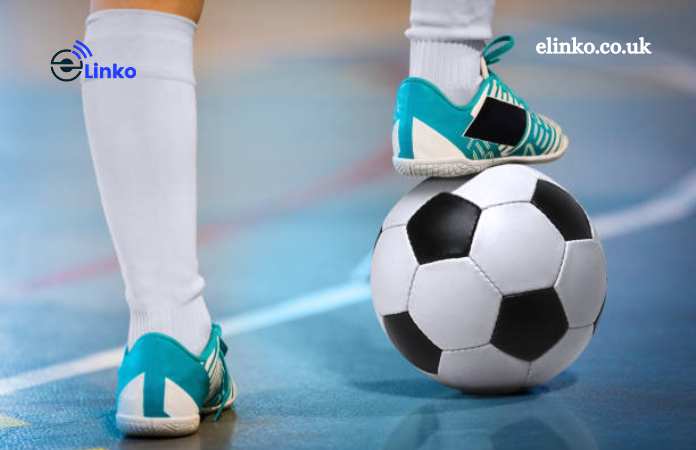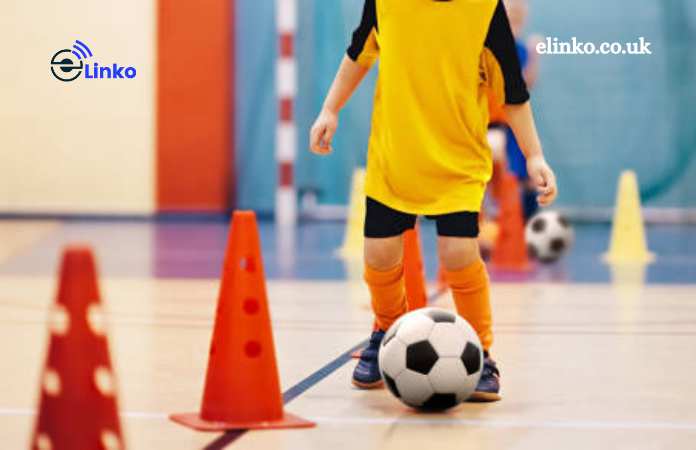The choice between indoor and outdoor soccer balls depends on where you will be playing most often and your style.
Indoor soccer balls are typically smaller and bounce less than outdoor soccer balls. They are designed to be used on hard surfaces such as indoor courts, so they have a softer feel and provide better control. Indoor balls are also lighter and have a low rebound, making them ideal for close control and quick passes.

On the other hand, outdoor soccer balls are usually larger, heavier, and bounce more than indoor soccer balls. They are designed to be used on grass, turf, or other outdoor surfaces, so they are more durable and can withstand rougher conditions. Outdoor soccer balls also have a more solid feel and provide greater power for long-range shots and pass.
If you are mainly playing indoor soccer, it’s best to use an indoor ball because it will perform better on the surface and provide better control. Similarly, you are mainly playing outdoor soccer. In that case, an outdoor soccer ball is better because it will perform better on grass or turf and provide greater power and accuracy.
In summary, choose an indoor soccer ball if you play on indoor courts or hard surfaces. If you play on outdoor fields, choose an outdoor soccer ball. If you play on both surfaces, consider having one to suit your playing style and get the most out of your game.
What are the advantages & disadvantages of Indoor Soccer balls?
Indoor soccer balls have certain advantages and disadvantages that you should consider before choosing one.
Advantages of Indoor Soccer Balls:
- Better Control: It has a softer feel and provides better control on hard surfaces, making them ideal for fast and accurate passing, dribbling, and ball handling.
- Low Bounce: It has a low rebound, which means they stay close to the ground and are easier to control. This is important for quick movements and close control.
- Lighter Weight: They are lighter than outdoor soccer balls, allowing players to easily make quick movements and execute tricky maneuvers.
- Designed for Indoor Use: Indoor footballs are specifically designed on indoor courts or hard surfaces, which means they perform better on these surfaces than outdoor soccer balls.
Disadvantages of Indoor Soccer Balls:
- Less Durable: They are typically less durable than outdoor soccer balls because they are designed for use on indoor courts or hard surfaces only. They can get scuffed or damaged easily if used on outdoor surfaces.
- Limited Use: They are not suitable for outdoor use, and using them on outdoor surfaces can prevent them from wearing out quickly.
- Limited Range: They are designed for close control and quick movements and are not ideal for long-range shots or passes.
- Size: Indoor footballs are smaller in size than outdoor soccer balls, which means they can be more difficult to track and hit accurately for players who are used to playing with outdoor soccer balls.
Overall, indoor soccer balls offer better control and are easier to handle on hard surfaces, but they are less durable and have a limited range. If you mainly play indoor soccer, an indoor soccer ball is the best choice for you. However, if you play indoor and outdoor soccer, it’s a good idea to have each type of ball to suit your playing style and the surface you will be playing on.
What Soccer Ball is used in FIFA World Cup?
The soccer ball used in the FIFA World Cup is usually a specially designed ball that is made specifically for the tournament.
The official match ball for the 2022 FIFA World Cup in Qatar is the “ADIDAS Uniforia.” It features a design inspired by the colors of the Qatari flag, with a base of white, blue, red, and black. It also features a design intended to represent the unity and diversity of the participating teams and fans.
The ADIDAS Uniforia features an advanced construction with a seamless surface that helps to improve accuracy and consistency. It also includes a foam backing layer to provide a softer touch and reduce bounce.
The official match ball for the FIFA World Cup changes from tournament to tournament and is usually announced several months in advance of the start of the tournament. The selected ball undergoes extensive testing to ensure that it meets the weight, size, and performance standards set by FIFA, the international governing body for soccer.



